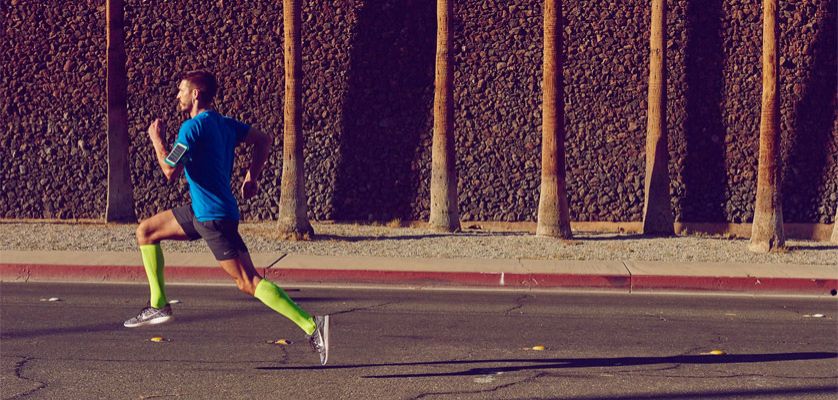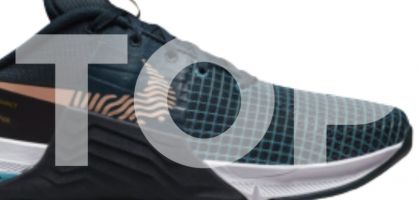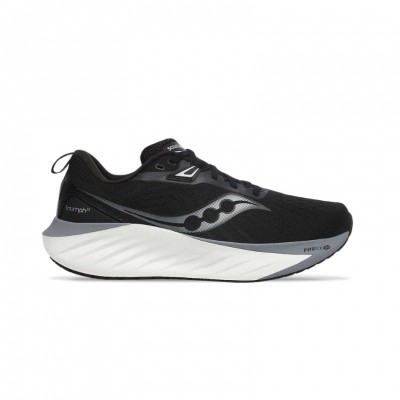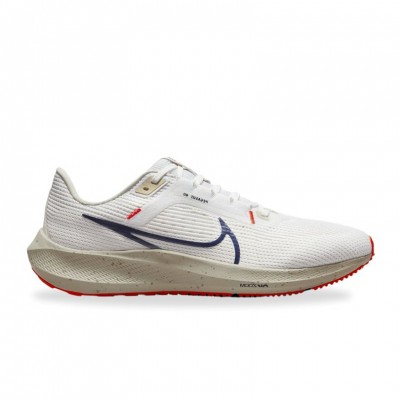When you're a kid, it's simple Running shoes make you faster! If you're wearing running shoes, you'll outrun that friend who's wearing dress shoes. The reason, as any kid can explain, is because running shoes weigh less. Lighter shoes let your feet simply fly. But there are several complex reasons that affect this phenomenon as we get older, and to understand them we must investigate. So the first question to solve is: What should we do, if we want to protect the body as we seek to run faster ?
It is well known that heavier and more robust models can slow down running speed, since it forces the body to burn more energy at a given pace. The question that surge is how much, exactly?

The research
Studies by famed running coach Dr. Jack Daniels, dating back to the 1980s, showed that for every additional 100 grams35 ounces) per shoe, approximately 1% more energy is burned. In theory, running speed and energy cost are proportional, so a 1% increase in mass should roughly correspond to a 1% slower running time.
But that claim has rarely been tested in practice, so a team at the Rodger Kram Locomotion Laboratory at the University of Colorado at Boulder set out to conduct research that was led by post-doctoral researcher Wouter Hoogkamer. This new study was published in Medicine & Science in Sports Exercise.
The study used pairs of Nike Zoom Streak 5 running shoes specially designed for flat running, with a base weight of just over 200 grams (depending on size). In some of the shoes, tiny lead beads were sewn into the tongue to add 100 grams, while in others, beads were sewn to the tongue and sides to add 300 grams.
- You may be interested in: The need to learn to run by Alberto Cebollada Kremer.
Previous research has found that people notice the weight of the shoes if they are the ones handling them, but don't realize it when they are already on their feet. So the researchers added a super-lightweight (4.6 grams) fake accelerometer to the shoes, and told the volunteers that they were very delicate, so the researchers had to put the shoes on and take them off. As a result, only one of the 18 volunteers in the study (all runners with sub-20:00 5K times) noticed a difference in the shoes, as their feet were wide and therefore the laces were shorter in the heavier ones.
Each subject ran a series of trials to assess their running economy (i.e., the amount of energy they burned at a standard pace), and then a series of 3,000-meter time trials on separate days. Unbeknownst to them, the shoes were different each time.

The results
As era, the results showed that running efficiency era lower by 1.11 percent for every 100 grams of weight added to the shoes.
Running time over 3,000 meters, meanwhile, increased by 0.78 percent per 100 grams. This supports the main thesis about changes in running economy being proportionally reflected in changes in running time. From a research perspective, this means that if you do something in the lab that changes running economy, one can reasonably conclude that it would also change running performance in a real environment.
Still, 1.11 and 0.78 percent are not identical values. One possible reason is that running economy was measured at a pace of 7:40 per mile, while the average speed in the 3,000-meter run was 05:36 per mile. Is it possible that the effects of the additional shoe weight also depend on how fast you are running? In a word, yes.
In a previous study that investigated the effects of shoe weight on running economy at various speeds, the studies revealed that there are fewer effects at higher speeds. In fact, when running at 5:30 per mile, a change of 0.8 percent per 100 grams was found, a surprisingly close valor to the 0.78 found in the 3,000-meter study.
- You may be interested in: Efficient running technique?Resistance to changing our habits.
An intriguing postscript: the researchers point out that the current marathon world record of 2:02:57 was set using running shoes weighing 230 grams. Subtract 100 grams, and in theory (it's 0.78 percent per 100 grams) would gain 575 seconds. Subtract the full weight, and it would gain 02:12.
There is a problem, however. Without running shoes, you lose the cushioning benefits-according to previous Kram research, cushioning can improve running economy by as much as 3 to 4 percent. In fact, as another of Kram's studies has shown, you can get the same benefit without shoes by cushioning against the ground with 10 millimeters of EVA rubber.
So if we are contemplating what it would take to achieve a marathon time closer to two hours, how about a course entirely covered in EVA rubber, to allow runners to save the extra weight of running shoes?

An example to understand the effect of weight on speed
The extra 500 grams weight of a pair of Running shoes is not on the back and is not weight (fat) around the belly. It is the weight of the shoes at the end of the legs. And the end of the legs is broadly dependent on the hips. So you are moving a weight of 500 grams from the end of about a meter of legs.
You don't have to be a mathematician or a physicist, but once you analyze it becomes clear that with a heavier weight, it will be more difficult to slow down or else accelerate, as opposed to what would happen with a lighter weight. So a lot of energy is wasted by repeating the same movement miles times over a 5 kilometer course.

Barefoot = more speed?
It is these theories that underpin the trend toward minimalistRunning shoes"barefoot," the running put the spotlight on the role of shoe weight and speed. A shoe designed to mimic the action of barefoot running weighs a mere 150 grams. Whereas a standard running shoe weighs more than 300 grams. It would seem that those who choose to run barefoot, or in radically reduced footwear, such as so-called minimalist shoes, should be running faster than people who run with their feet on thick soles in motion-controlled models.
However, studies suggest that barefoot running is no more efficient for running economy than running in lightly cushioned shoes. Researchers have proposed two possible explanations for these findings:
- The elastic energy returned by the midsole of the cushioned shoe acts like a spring, assisting the runner and compensating for the drawback of added weight.
- When running barefoot, it is the muscles rather than the cushioned midsole shoes that must act to absorb the impact of the landing which causes more energy to be used.
- You may be interested in: The shoe drop: definition, types and functions.
However, there seems to be a weight threshold (between 150 to 200 grams) above which the energy cost of running with specific running shoes is higher than running barefoot. This threshold is probably different for each individual, and depends on factors such as body mass and the properties of the cushioning material of the shoe.
When it comes to running shoes, weight does not automatically mean cuts in running time. There comes a point when reducing material and weight in running shoes actually slows a runner down, too little material underfoot reduces shock absorption and energy return. Less energy return means reducing foot rotation or using more energy to develop the same speed. That makes the runner less efficient.
IN THE LONG RUN, A LESS EFFICIENT RUNNER IS A SLOWER RUNNER.

What is the solution?
A shoe that provides optimal energy return, but doesn't weigh an ounce more than necessary, is the shoe that will allow you to run as fast as possible without breaking down. That optimal in-between is difficult to achieve, but it's available to both average and elite runners. Finding the perfect weight shoe that will help you reach your ultimate performance level requires some research and patience.

How do you choose the right shoes?
To find the right lightweight shoes, you need to consult a professional in a store, either a podiatrist or even an expert in foot biomechanics. You can find a lighter version of the shoes you are currently running in.
You might be interested in: Guide to choosing the right Running shoes
Wear your lighter shoes one day out of five, so your muscles and tendons will adapt without risking injury. Add one day per week, one week at a time. You may have to try several pairs of new, lightweight running shoes before you find the right ones.
Photos: Nike Run Club (Nike Running Spain. Facebook)
Read more news about: Running News



















